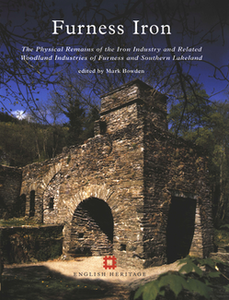English Heritage Archaeological Monographs
English Heritage, 2014. https://doi.org/10.5284/1028203. How to cite using this DOI
Data copyright © English Heritage unless otherwise stated
This work is licensed under the ADS Terms of Use and Access.
Primary contact
Historic England
The Engine House
Firefly Avenue
Swindon
SN2 2EH
Resource identifiers
- ADS Collection: 1416
- DOI:https://doi.org/10.5284/1028203
- How to cite using this DOI
Furness Iron: The physical remains of the iron industry and related woodland industries of Furness and Southern Lakeland
Bowden, M.
English Heritage (2000)
Abstract:

Furness and the neighbouring parts of southern and western Cumbria had a lively and significant iron industry in the 18th and 19th centuries, growing out of a tradition of ironworking stretching back to the medieval period and probably much earlier. Unlike the similar iron-rich regions of the Weald and the Forest of Dean, Furness has not received the attention it deserves as a cradle of this vital industry. The physical remains of the iron industry and its supporting woodland industries, surviving both as standing buildings and as archaeological field monuments, are widespread in the fells of High Furness and the lowlands of the Furness peninsula, and in many cases they are very well preserved. The Royal Commission on the Historical Monuments of England - now merged with English Heritage - has compiled a record of the best preserved and most representative of these buildings, sites and landscapes, using aerial photography, ground photography and detailed analytical survey. This book is a synthesis of the results of that survey, which will, it is hoped, form a stepping stone to further archaeological and historical research. It is also intended to raise the profile of these important remains both locally and further afield. It will be of particular value to all those interested in the history of the Lake District, in industrial archaeology, and in the preservation of the industrial heritage and its landscape context.
Download monograph
| Furness Iron: The physical remains of the iron industry and related woodland industries of Furness and Southern Lakeland, Bowden, M., English Heritage (2000), ISBN: 9781848021556 | 20 Mb |





